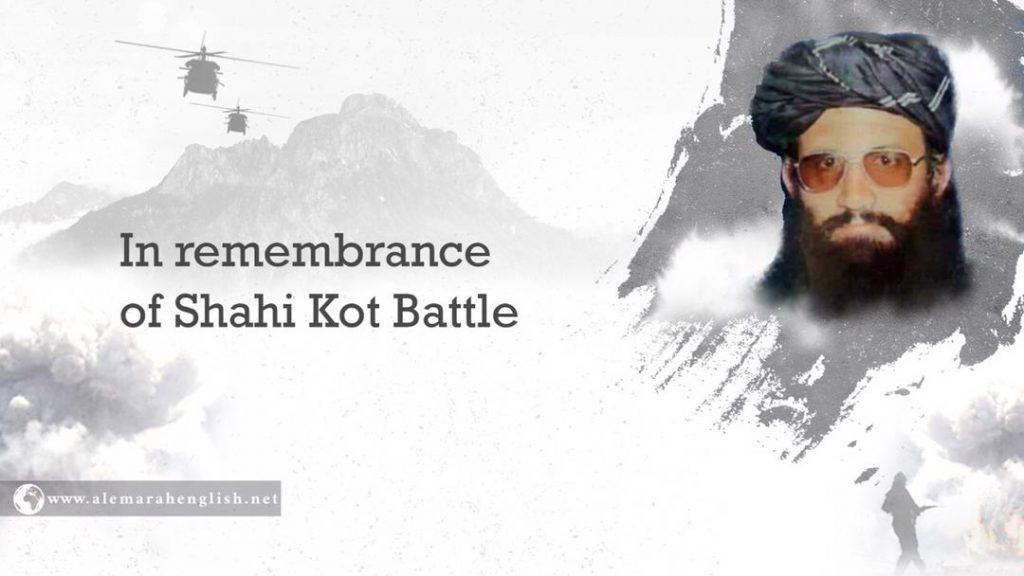
The Taliban eulogized Mullah Saif ur Rahman Mansoor, its commander who led both Taliban and Al Qaeda fighters against U.S. forces at the battle of Shahi Kot in Paktia province in 2002. The celebration of Mansoor and the battle of Shahi Kot is a reminder of the Taliban’s enduring relationship with Al Qaeda nearly two decades after the fact.
Mansoor and the battle of Shahi Kot (known as Operation Anaconda) were lionized in an English-language statement that was released by the Taliban on its official website, Voice of Jihad, on March 7.
“Today we are remembering this historical battle where the valiant and heroic Mullah Saif ur Rahman Mansoor (may Allah accept him) led his men in their symbolic resistance against the foreign invaders,” the Taliban statement said.
The Taliban described the battle as “the beginning of the sacred jihad against the occupation of Afghanistan.” Mansoor and his followers, which included Al Qaeda fighters, “boldly raised the banner of Jihad against the invaders.”
The Taliban noted that 19 years after the battle of Shahi Kot, “the invaders have fallen from their position of arrogance and false pride.”
Mansoor was later thought to have been killed during fighting against the Pakistani military in South Waziristan in Jan. 2008. However, the Taliban has not stated when and where Mansoor was killed. If Mansoor was killed in Pakistan, the Taliban would not admit that as the group maintains it only wages jihad in Afghanistan and denies it operates inside Pakistan.
At the time of Mansoor’s reported death, the Movement of the Taliban in Pakistan, which is allied with both the Afghan Taliban and Al Qaeda, was battling the Pakistani military for control of South Waziristan.
The Taliban, Al Qaeda, and Operation Anaconda
Mansoor led the Taliban’s forces in Zurmat district in Paktia province when the U.S. and allied forces launched Operation Anaconda in March of 2002. U.S. intelligence indicated Al Qaeda commanders and fighters who fled the Tora Bora mountains in late 2001 were massing in the Shahi Kot Valley and the Arma Mountains. Included among the Al Qaeda forces were “Arabs, Chechens, Uzbeks, and Pakistanis.” The U.S. initially estimated that 150 to 200 jihads were present in the valley and mountains, however as fighting intensified the high-end estimate put it over 1,000 fighters.
Mansoor’s family had deep roots in the region. His father, Malawi Nasrullah Mansoor, welcomed foreign jihadists into the Shahi Kot fortress complex during the war against the Soviets. After the Taliban gained control of Afghanistan in 1996, the elder Mansoor was named governor of Paktia province. He commanded Taliban troops against the Northern Alliance before he was killed by a rival warlord.
U.S. and allied forces waged fierce battles in the Shahi Kot Valley for two weeks from March 2-16. U.S. warplanes bombed and strafed Taliban and Al Qaeda complexes, cases, and fortifications. Several U.S. helicopters were hit by enemy fire and some were forced to make hard landings.
Eight U.S. servicemen were killed and scores more were wounded, while an estimated 500 Taliban and Al Qaeda fighters were killed. Between March 3-4, “hundreds” of Al Qaeda fighters were killed while attempting to overrun a U.S. mountaintop position in the Arma mountains.
While Al Qaeda took a beating during the battle, they were by no means defeated. A group of Al Qaeda fighters also captured and executed U.S. Navy Petty Officer First Class Neil Robert after his helicopter was hit by enemy fighter and he fell out the back ramp.
Mansoor was quoted as saying that the Taliban and Al Qaeda would “continue to wage jihad until our last breath against the Americans for the glory of Islam and for the defense of our country.”
Within three years, the Taliban reignited its insurgency was was waging major offensives in southern and eastern Afghanistan. This forced the Obama administration to “surge” more than 100,000 U.S. troops in 2009 in an attempt to quell the Taliban insurgency. The Taliban weathered that storm and by 2014, it began retaking significant ground.
The Taliban’s praise for the battle of Shahi Kot and Mansoor is curious, given the group’s claim that Al Qaeda hasn’t been in Afghanistan since 2001.
The Taliban has made this contradictory claim in order to deflect criticism that it continues to shelter Al Qaeda to this day. In an agreement with the U.S. on Feb 29, 2020 that facilitates the withdrawal of American forces by May of 2021, the Taliban committed to preventing “any of its members, other individuals or groups, including al-Qa’ida, to use the soil of Afghanistan to threaten the security of the United States and its allies.”
Despite this agreement, the U.S. and Afghan forces have killed several senior Al Qaeda leaders in Afghanistan.







